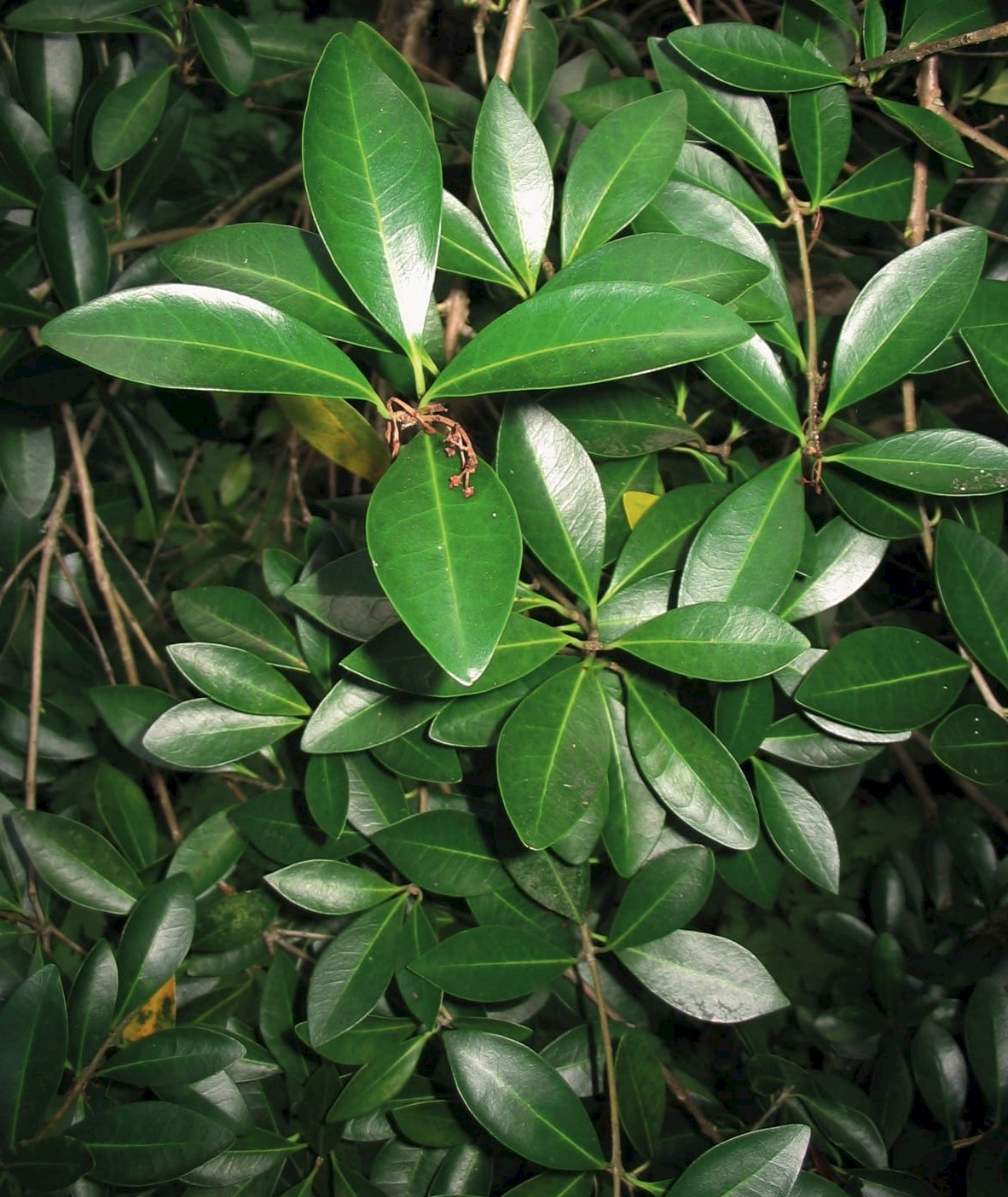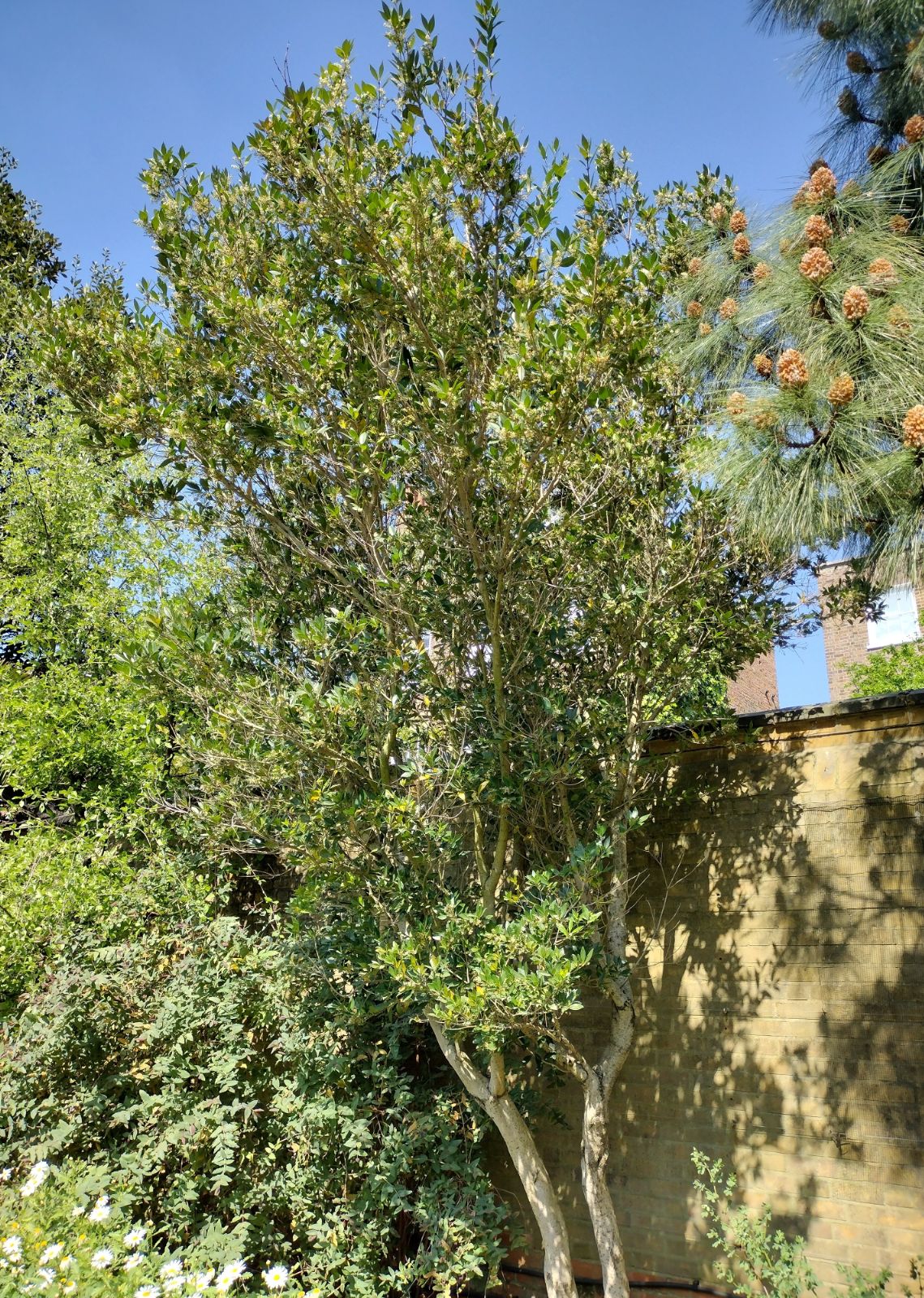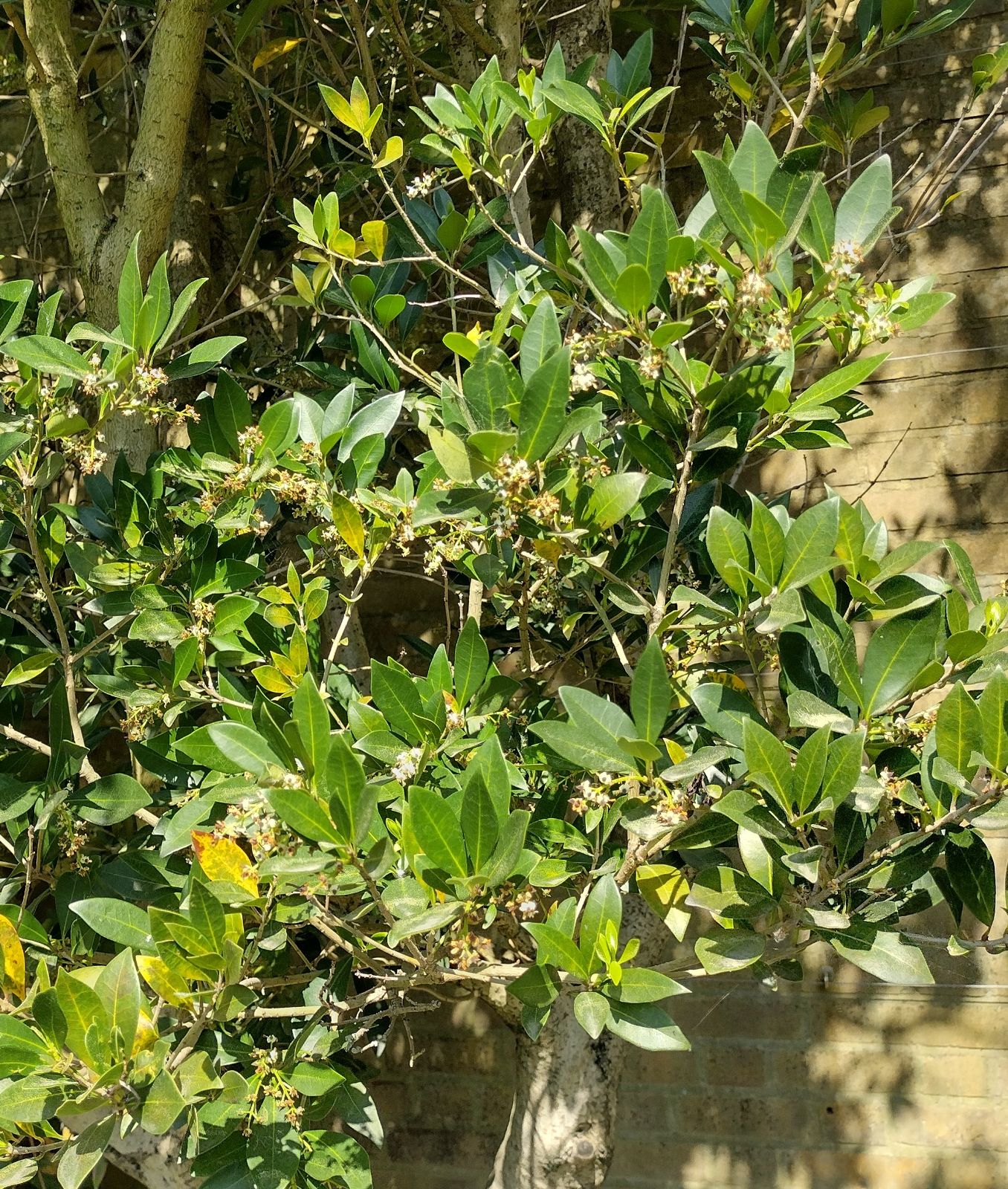Picconia azorica
Credits
Article from New Trees by John Grimshaw & Ross Bayton
Recommended citation
'Picconia azorica' from the website Trees and Shrubs Online (treesandshrubsonline.
Genus
Common Names
- Pau-branco
Shrub or small tree to 8 m. Bark smooth, pale. Leaves evergreen, leathery, 3–6 × 1–2.5 cm, lanceolate to obovate, glabrous, secondary veins inconspicuous, margins entire, apex obtuse; petiole short. Inflorescences axillary. Flowers rather small, white. Drupe ovoid, dark blue to black, to 1.5 cm long. Tutin 1933, Schäfer 2002. Distribution PORTUGAL: Azores. Habitat Scattered in coastal forest, mainly composed of introduced species, between 0 and 750 m asl. USDA Hardiness Zone 8–9. Conservation status Endangered, due to ongoing habitat loss, wood extraction and the introduction of alien species. Illustration NT561.
Picconia azorica is even less well known than its Madeiran relative, and on its horticutural merits is unlikely ever to become a popular plant. The only specimens traced in cultivation in the current research grow in a secluded shrubbery near Jermyn’s House at the Sir Harold Hillier Gardens, forming rather untidy bushy plants about 3 m tall. They derive from a collection made in the Azores by E. Sjögren in 1994. They are densely clad with dark green leaves, and suggest a not very exciting Phillyrea. It probably requires mild coastal conditions to achieve full stature.



